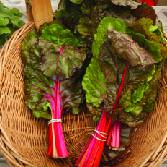-
CATEGORY ::
- All Seeds /
- All Flower Seeds /
- All Carnation Seeds


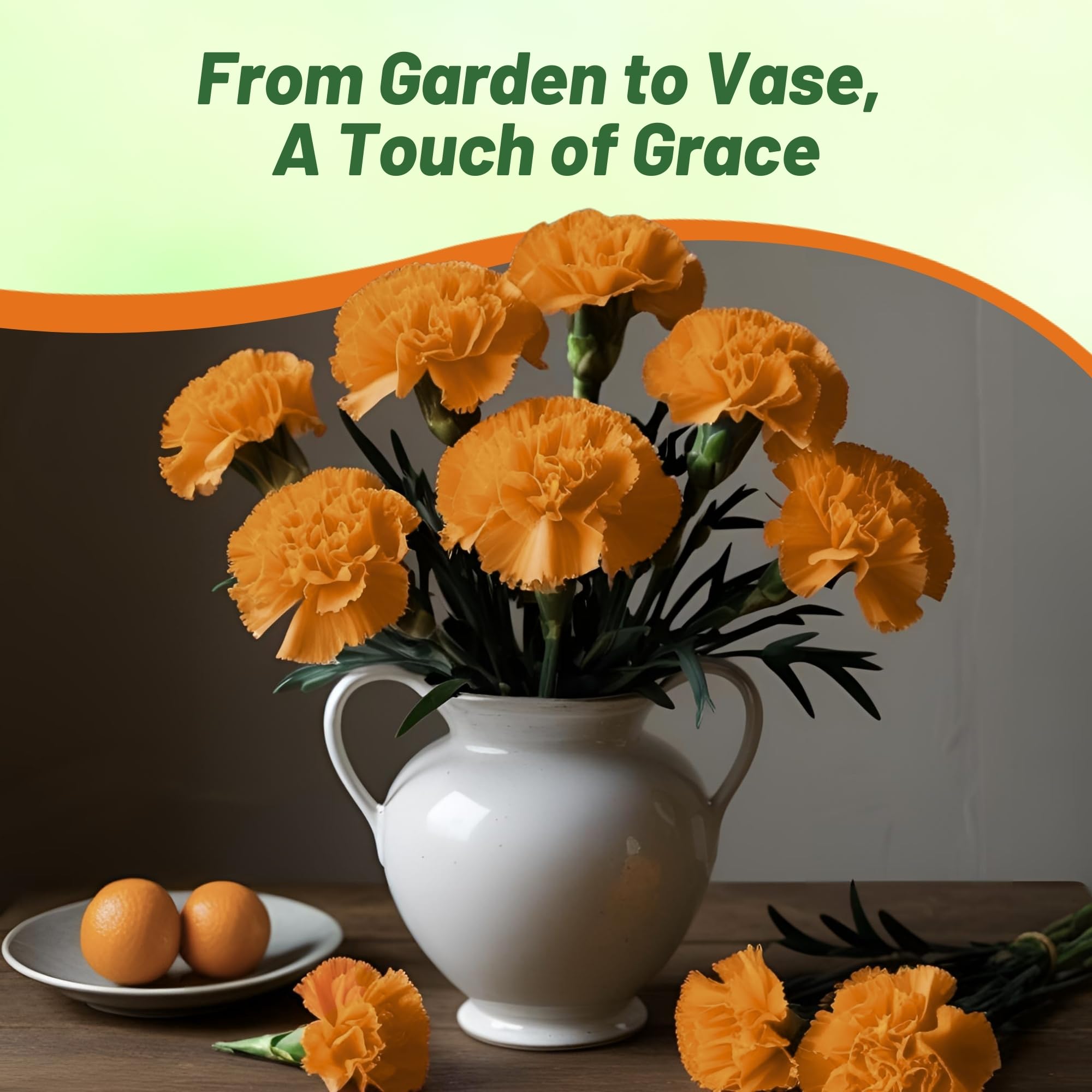

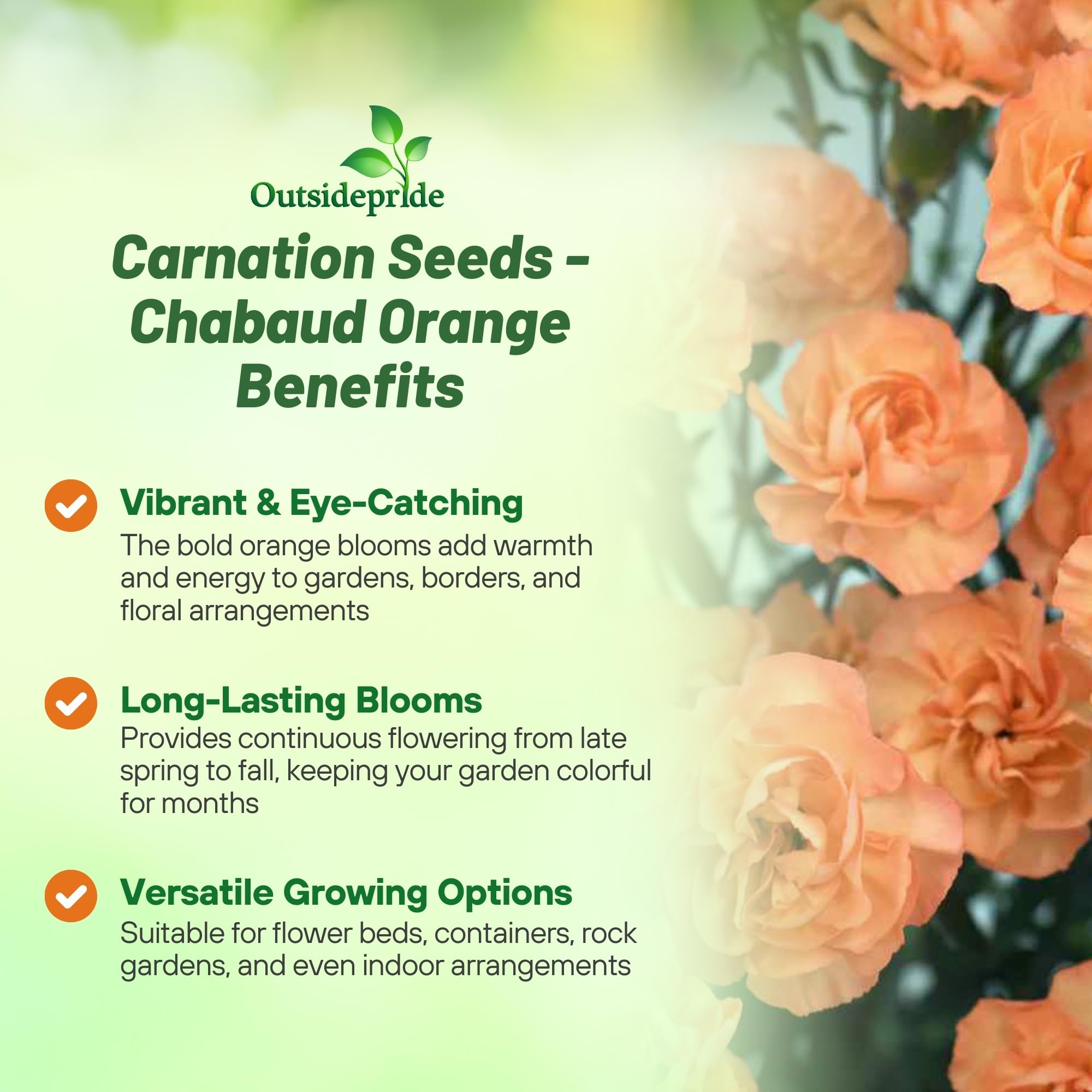
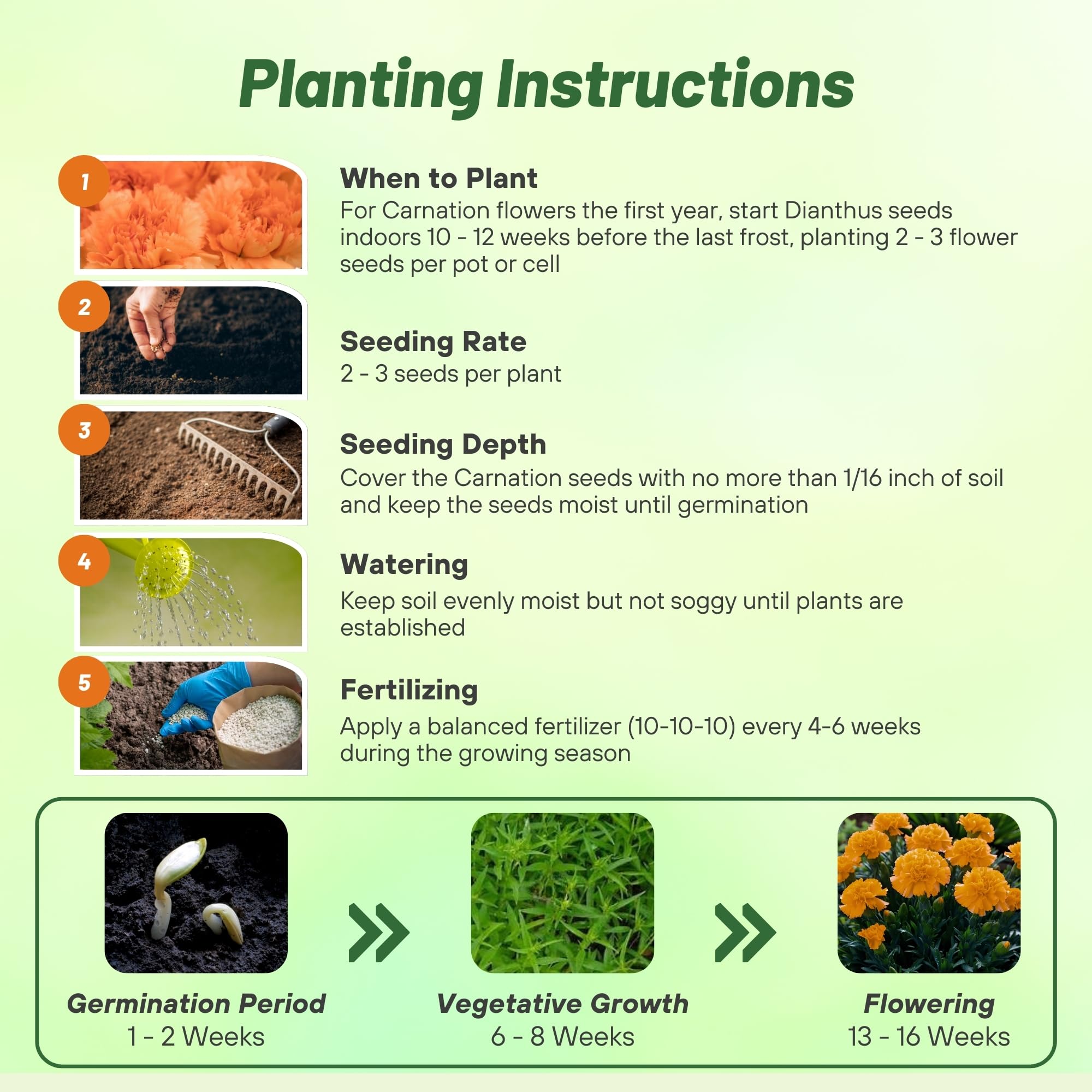


Carnation Seeds - Chabaud Orange
About...
Carnation (Dianthus Caryophyllus Chabaud Orange) - Enjoy this incredible beauty by starting Carnation seeds indoors in the early spring. This Dianthus orange variety is bi-colored bringing both orange and cream together to create a lovely sherbet-like appearance.MORE CARNATION OPTIONS
Planting Directions
TEMPERATURE
68 - 75F
AVERAGE GERM TIME
7 - 14 days
LIGHT REQUIRED
No
DEPTH
Sow seeds 1/16th inch deep
SOWING RATE
2 - 3 seeds per plant
MOISTURE
Keep moist until germination
PLANT SPACING
12 - 18 inches
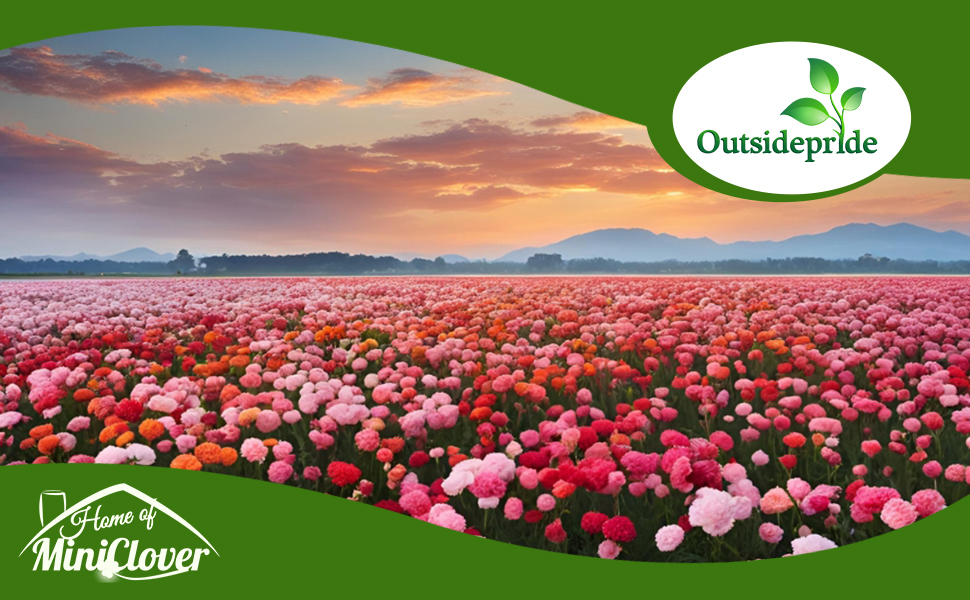
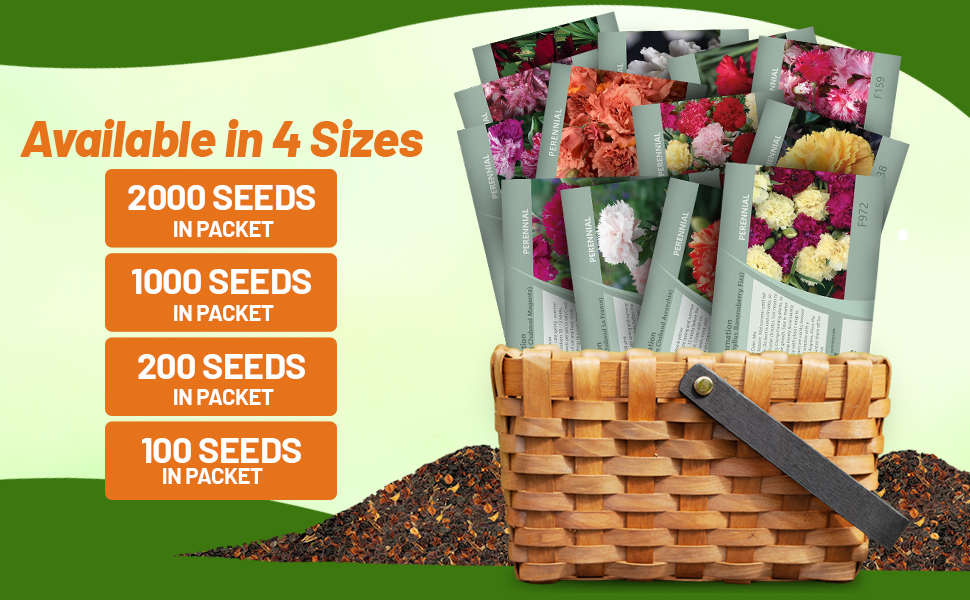
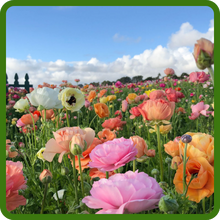

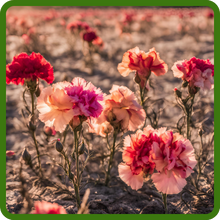
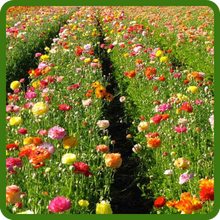
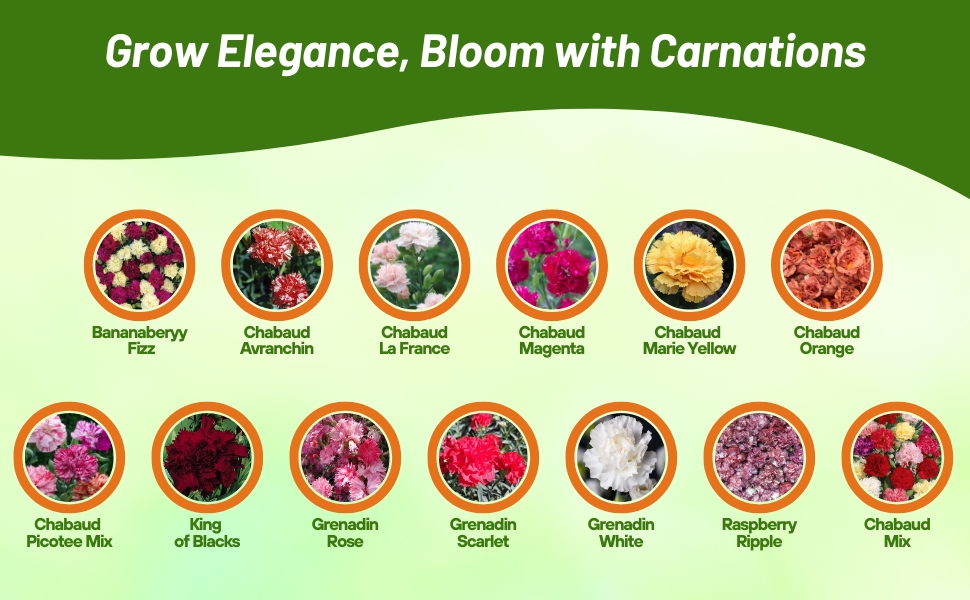
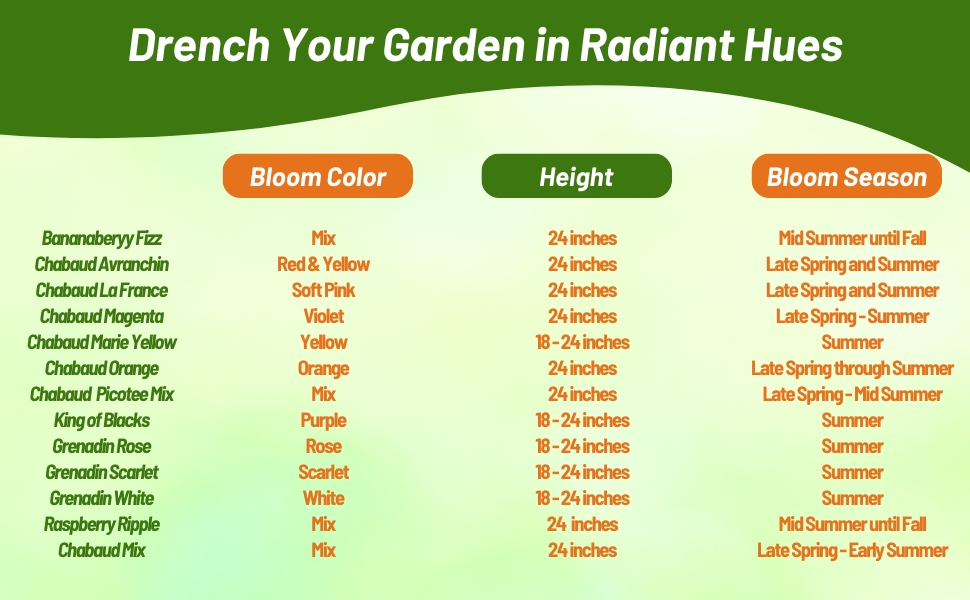

Carnation (Dianthus Caryophyllus Chabaud Orange) - Enjoy this incredible beauty by starting Carnation seeds indoors in the early spring. The Dianthus Caryophyllus Chabaud series are tall and perfect for floral arrangements. The Carnation flowers also dry and preserve well.
Common Questions
What are the best places to use carnation flowers in landscape?
This is a great flower for beds and borders, cottage gardens and containers.
Does this flower attract pollinators?
Yes, carnations attract bees and butterflies as well as some beneficial insects to your garden.
Do I need to deadhead my flowers?
To promote extended bloom time and compact growth you will need to deadhead your flowers.
Do I need to divide my plants?
Yes, you should divide your carnation plants every second spring or plant new ones to maintain vigor.
Are carnations toxic to animals?
Yes, this plant is toxic to dogs, cats and horses.
Planting Directions
TEMPERATURE
65 - 70F
AVERAGE GERM TIME
7 - 14 days
LIGHT REQUIRED
No
DEPTH
Cover thickness of seed
SOWING RATE
2 - 3 seeds per plant
MOISTURE
Keep moist until germination
PLANT SPACING
12 - 18 inches
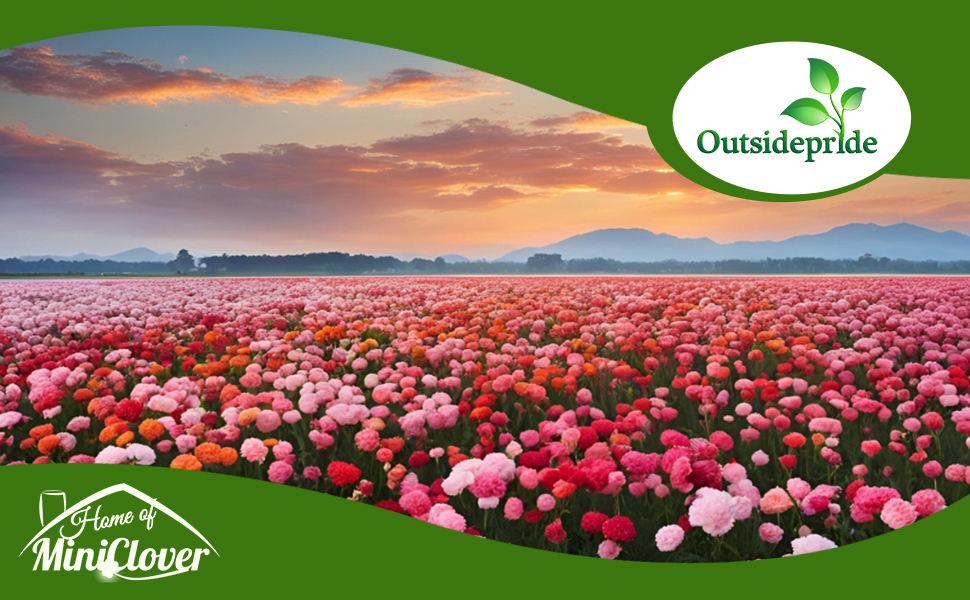
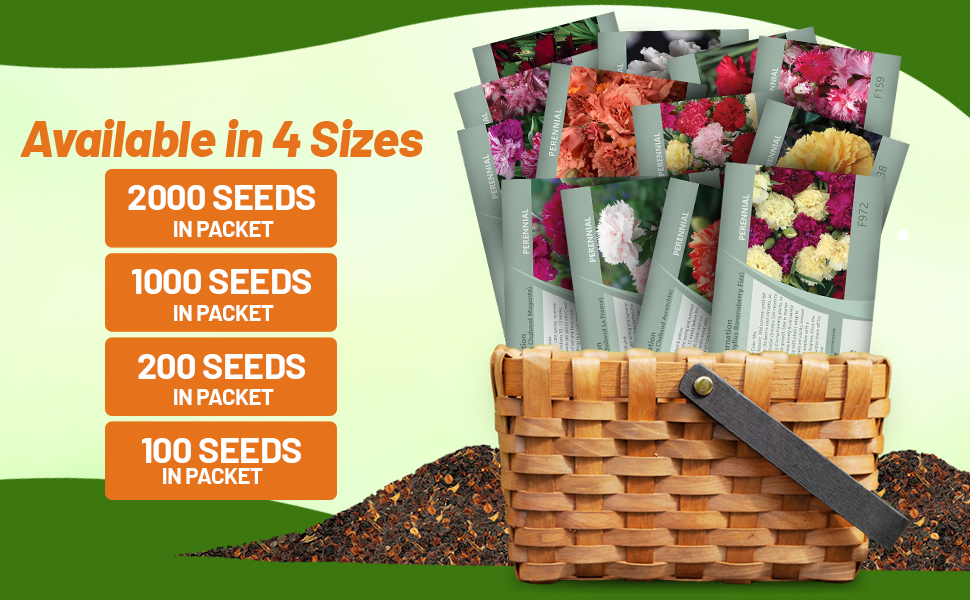
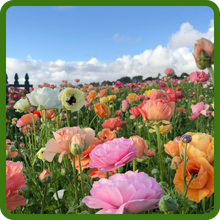
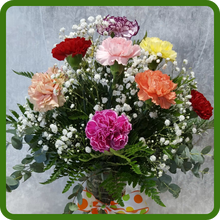
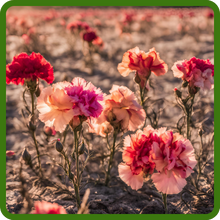
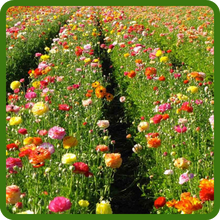
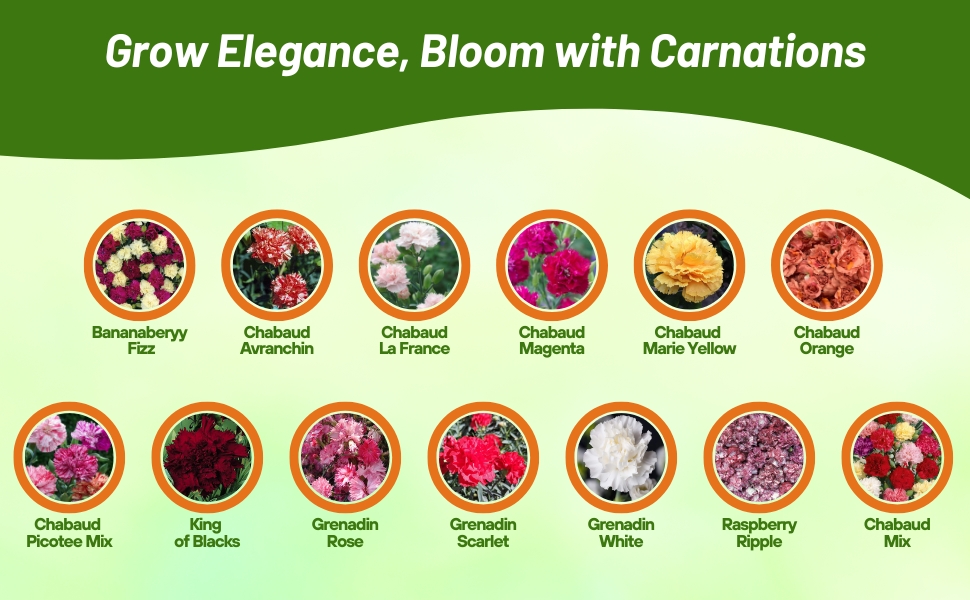
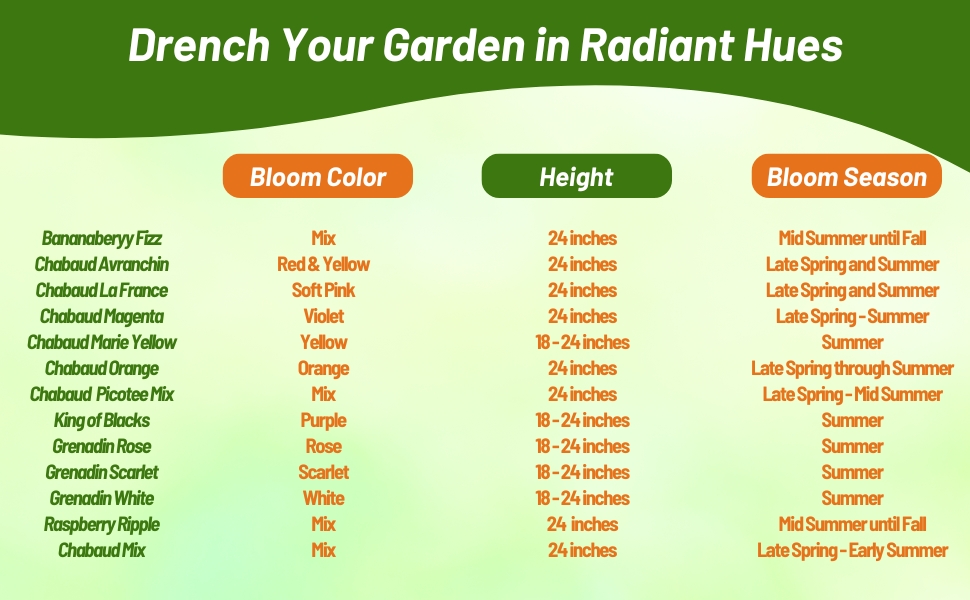
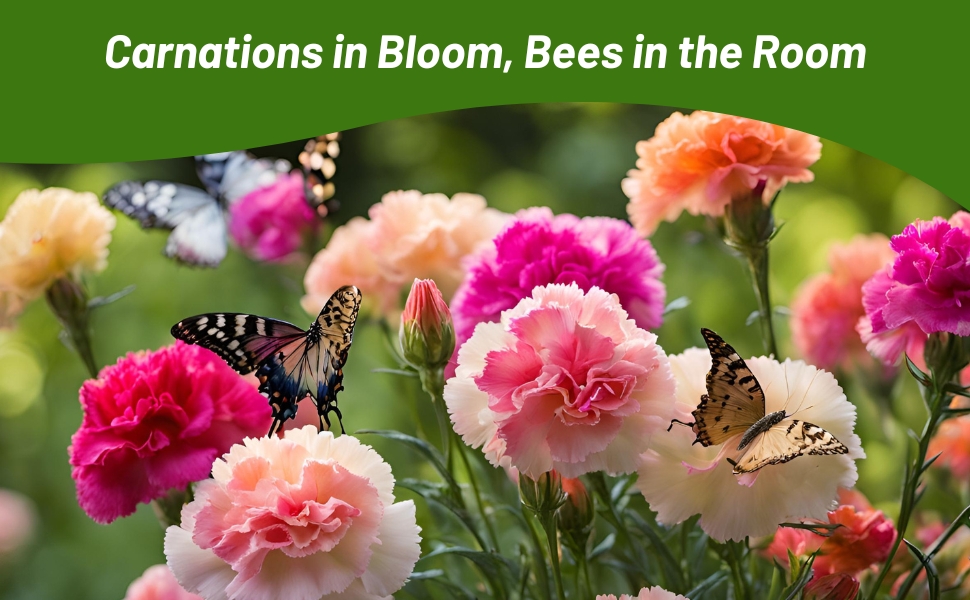
Carnation (Dianthus Caryophyllus Grenadin King of Blacks)- Grown from Carnation seeds, this is an heirloom Dianthus flower found in many home gardens which is often used for a cut flower. King of Blacks is the darkest of a reddish purple color and has the appearance of black velvet with a blue-gray foliage.
Common Questions
What are the best places to use carnation flowers in landscape?
This is a great flower for beds and borders, cottage gardens and containers.
Does this flower attract pollinators?
Yes, carnations attract bees and butterflies as well as some beneficial insects to your garden.
Do I need to deadhead my flowers?
To promote extended bloom time and compact growth you will need to deadhead your flowers.
Do I need to divide my plants?
Yes, you should divide your carnation plants every second spring or plant new ones to maintain vigor.
Are carnations toxic to animals?
Yes, this plant is toxic to dogs, cats and horses.
Planting Directions
TEMPERATURE
65 - 70F
AVERAGE GERM TIME
7 - 14 days
LIGHT REQUIRED
No
DEPTH
Cover thickness of seed
SOWING RATE
2 - 3 seeds per plant
MOISTURE
Keep moist until germination
PLANT SPACING
12 - 18 inches
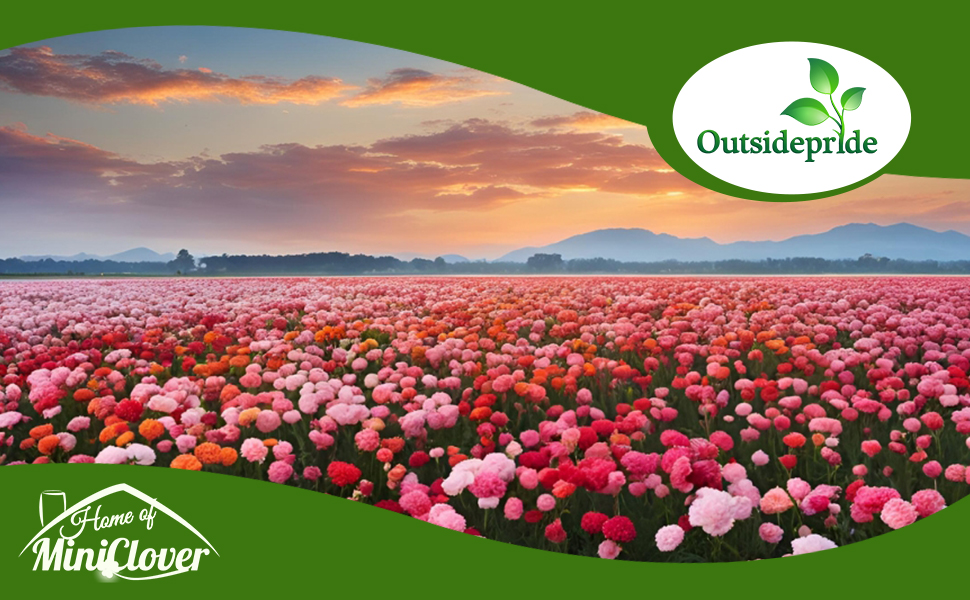
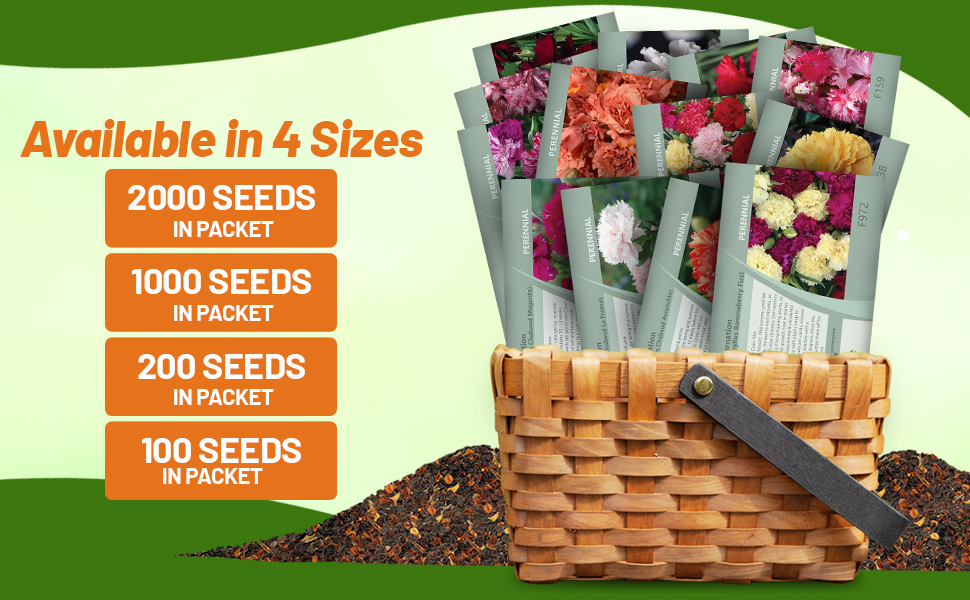
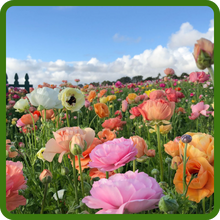

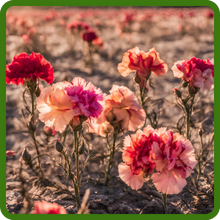
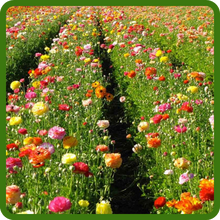
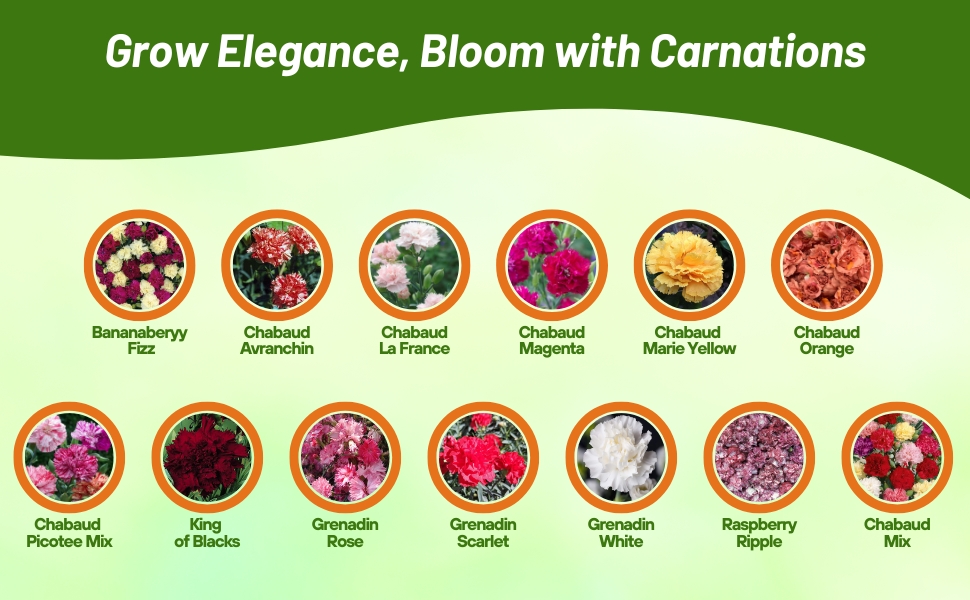
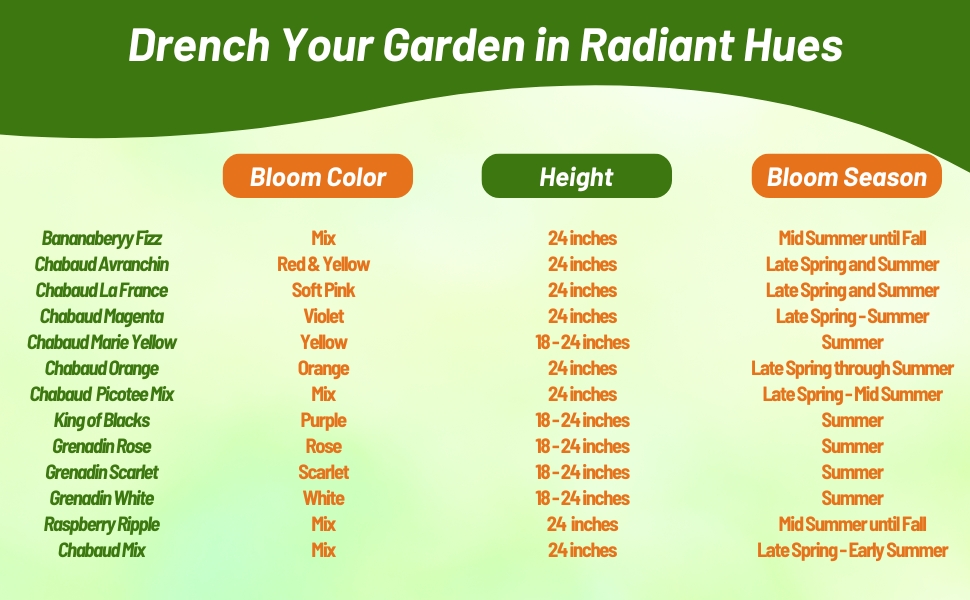
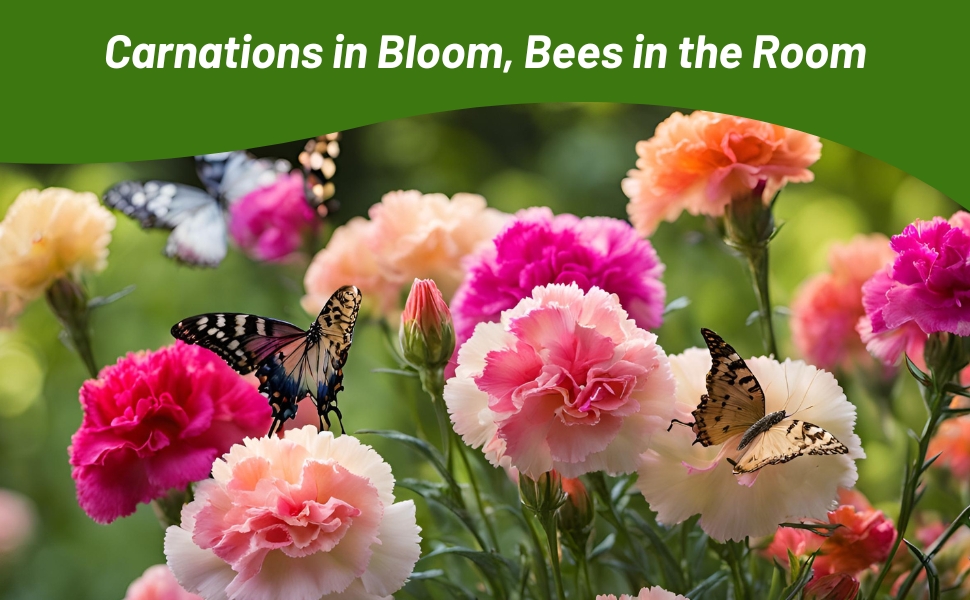
Carnation (Dianthus Caryophyllus Grenadin Rose) - Start Carnation Seeds, and you can have a wide selection of lovely Carnation flowers for cutting and arrangements. Grenadin Carnations are very popular with florists and are used in corsages, bouquets, and a wide range of floral arrangements. You can grow this lovely Rose colored Carnation from flower seed in your own garden! They grow big, full blooms on strong, straight stems. They feature a blue-gray foliage that stays attractive even when the blooms are finished. Their blooms last a long time whether left in the garden or cut for the vase. Dianthus Caryophyllus has a wonderful spicy clove-like fragrance. Good drainage is essential for winter hardiness.
Sow Dianthus Caryophyllus seeds in trays using starter mix 6 weeks before last frost. Cover only to the thickness of the flower seed. Bottom water to keep the seeds moist. Carnation seeds germinate in 1 - 2 weeks. Pinch out the growing tips in the seedling tray when the plants are 2 - 3 inches in height. This encourages bushy growth. Transplant Dianthus plants outdoors after last frost. Deadhead spent Carnation flowers to prolong bloom time.
Common Questions
What are the best places to use carnation flowers in landscape?
This is a great flower for beds and borders, cottage gardens and containers.
Does this flower attract pollinators?
Yes, carnations attract bees and butterflies as well as some beneficial insects to your garden.
Do I need to deadhead my flowers?
To promote extended bloom time and compact growth you will need to deadhead your flowers.
Do I need to divide my plants?
Yes, you should divide your carnation plants every second spring or plant new ones to maintain vigor.
Are carnations toxic to animals?
Yes, this plant is toxic to dogs, cats and horses.
Planting Directions
TEMPERATURE
65 - 70F
AVERAGE GERM TIME
7 - 14 days
LIGHT REQUIRED
No
DEPTH
Cover thickness of seed
SOWING RATE
2 - 3 seeds per plant
MOISTURE
Keep moist until germination
PLANT SPACING
12 - 18 inches
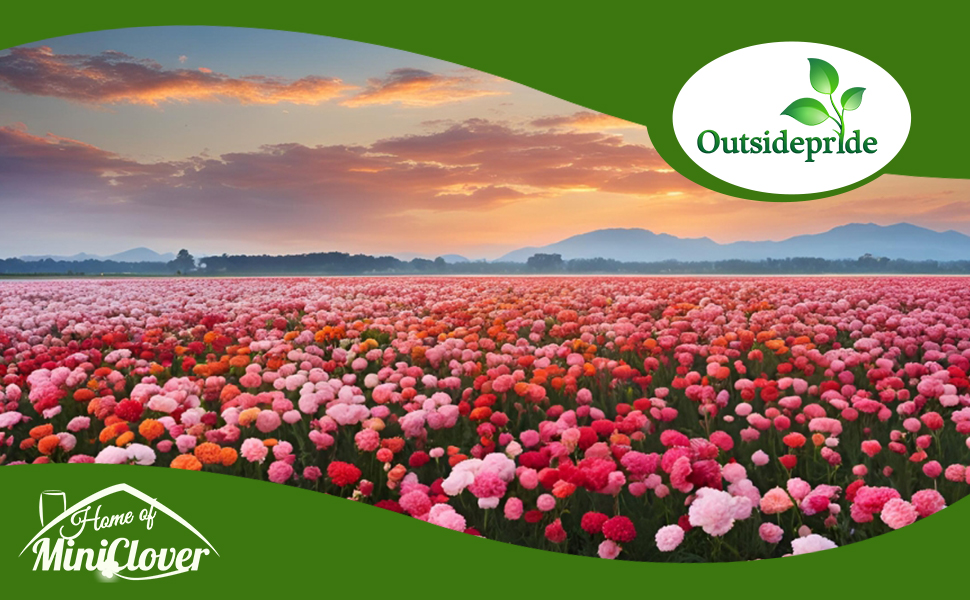
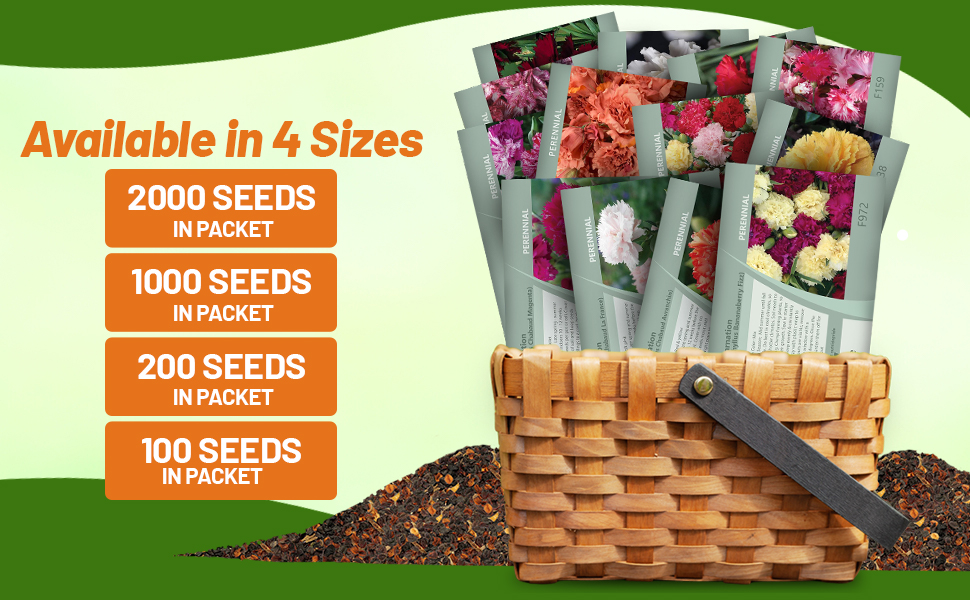
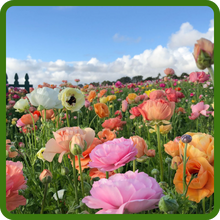
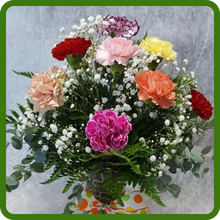
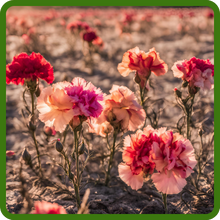
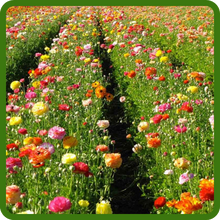
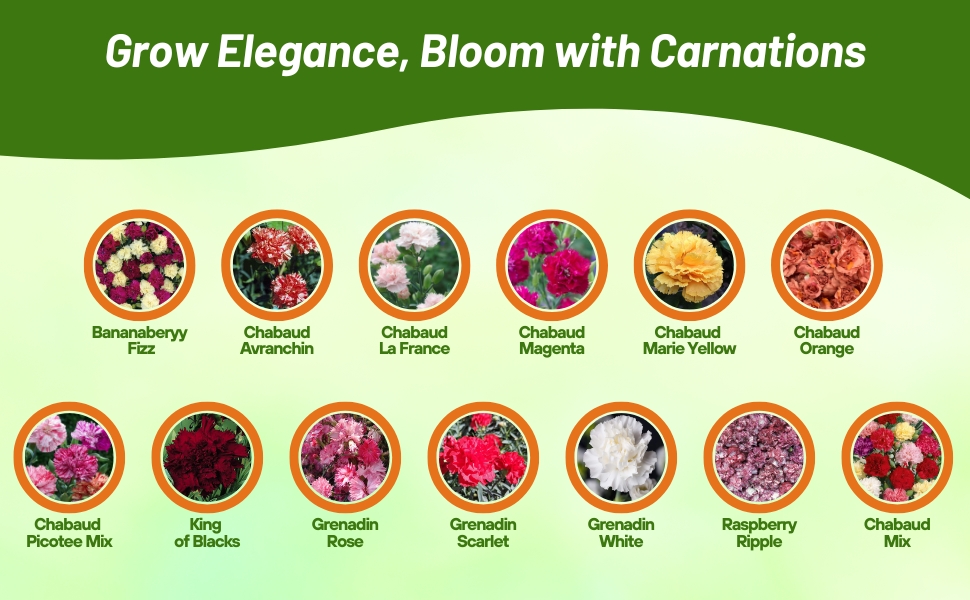
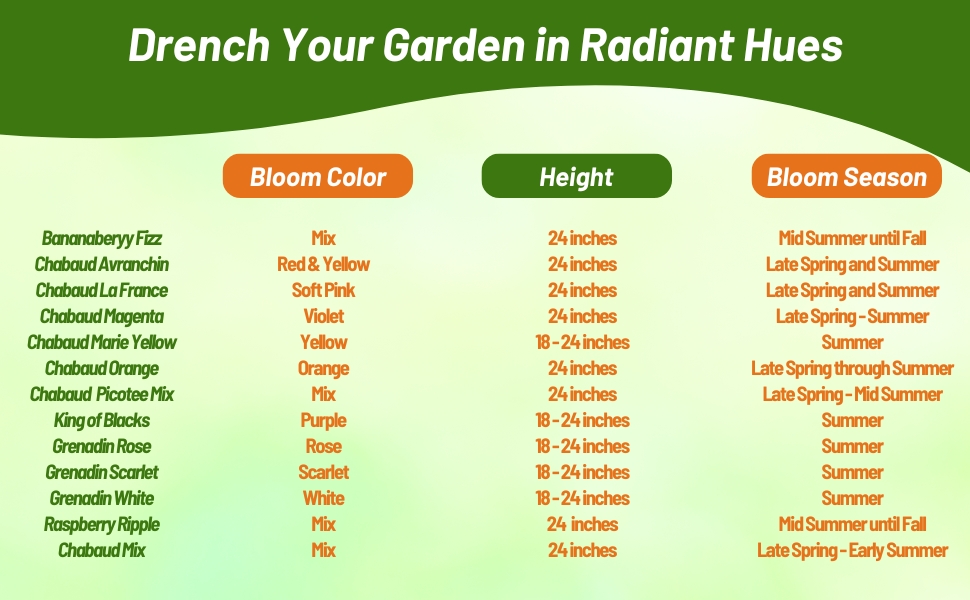
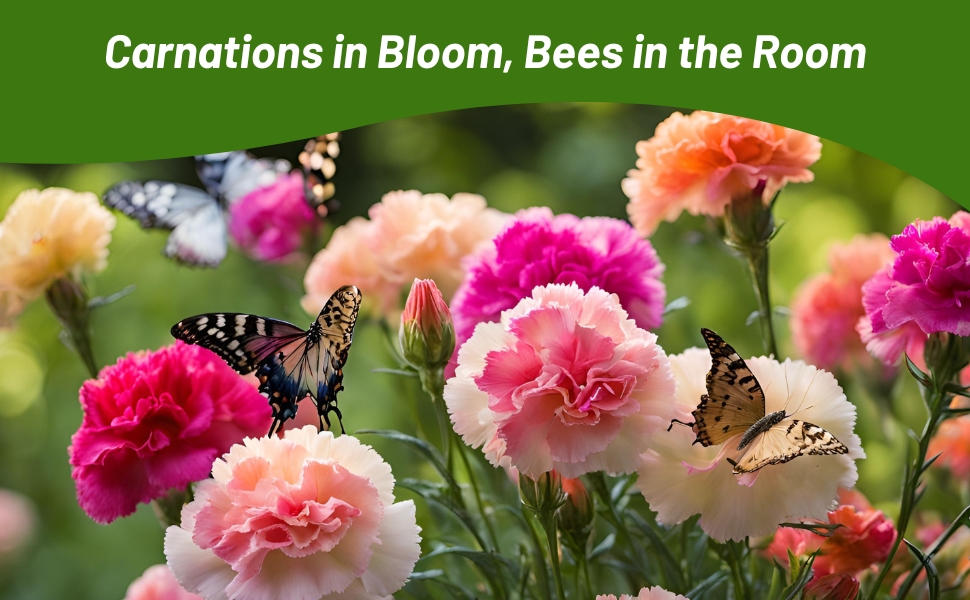
Carnation (Dianthus Caryophyllus Grenadin Scarlet) - There are so many uses for this attractive, sweet-scented Carnation, so start some Dianthus seeds and enjoy these lovely flowers! Grenadin Carnation can be used as a bedding plant, in containers, as an excellent cut flower, or in rock gardens. The scarlet red frilly blooms on this Carnation plant will look lovely in the garden or in the vase! Dianthus Caryophyllus are so versatile and easy to grow from flower seed.
Carnation flower seeds can be directly sown into your flower garden, or started indoors for transplanting later. If planting outdoors, sow the flower seeds in the spring after frost season is over. For indoors, start the Carnation seeds 6 weeks before the end of frost season. When sowing Carnation flower seeds, cover them lightly with fine soil the thickness of the seeds. Space seeds or seedlings approximately 12 inches apart. Pinch out the growing tips on seedlings when the plants are 2 - 3 inches in height. This encourages bushy growth.
Carnation flowers are very easy to grow. They prefer full sun and a rich, well drained soil. Water them during dry periods, once or twice per week. Add a general purpose fertilizer once or twice a month, but no more than that or you will get too much foliage. Carnations have few problems with insects and disease. Deadhead spent Carnation flowers to prolong bloom time.
Common Questions
What are the best places to use carnation flowers in landscape?
This is a great flower for beds and borders, cottage gardens and containers.
Does this flower attract pollinators?
Yes, carnations attract bees and butterflies as well as some beneficial insects to your garden.
Do I need to deadhead my flowers?
To promote extended bloom time and compact growth you will need to deadhead your flowers.
Do I need to divide my plants?
Yes, you should divide your carnation plants every second spring or plant new ones to maintain vigor.
Are carnations toxic to animals?
Yes, this plant is toxic to dogs, cats and horses.
Planting Directions
TEMPERATURE
65 - 70F
AVERAGE GERM TIME
7 - 14 days
LIGHT REQUIRED
No
DEPTH
Cover thickness of seed
SOWING RATE
2 - 3 seeds per plant
MOISTURE
Keep moist until germination
PLANT SPACING
12 - 18 inches
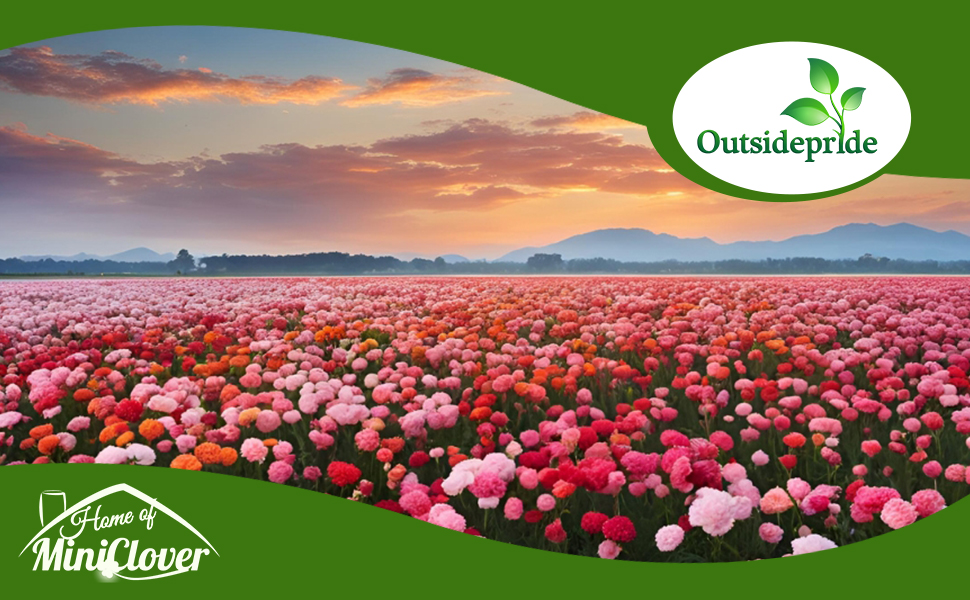
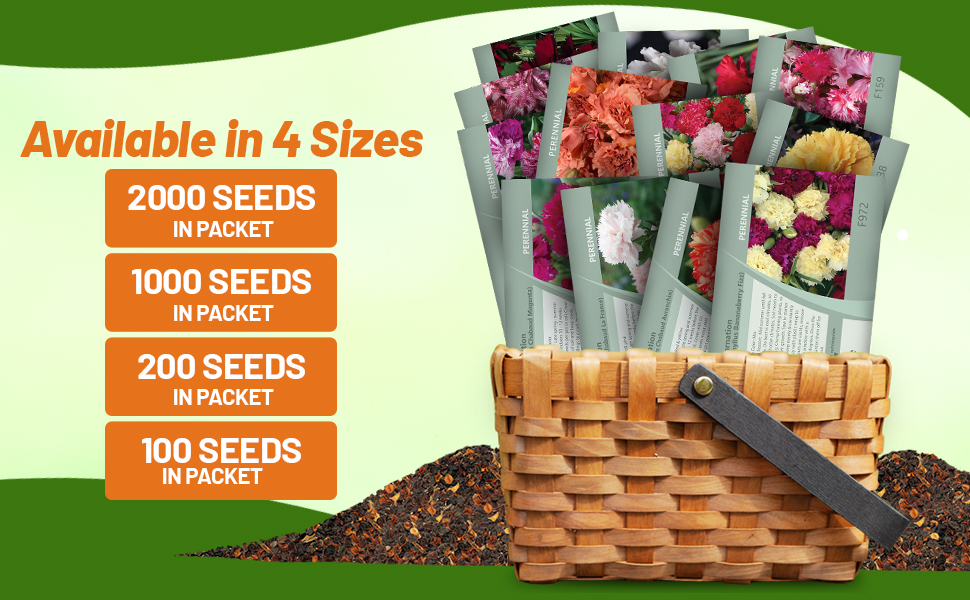
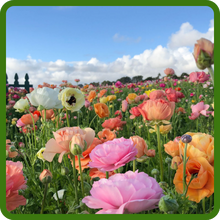
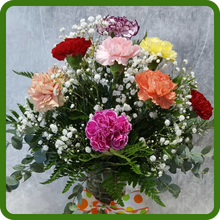
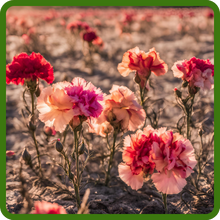
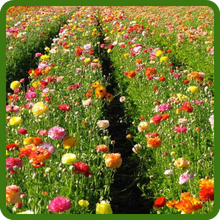
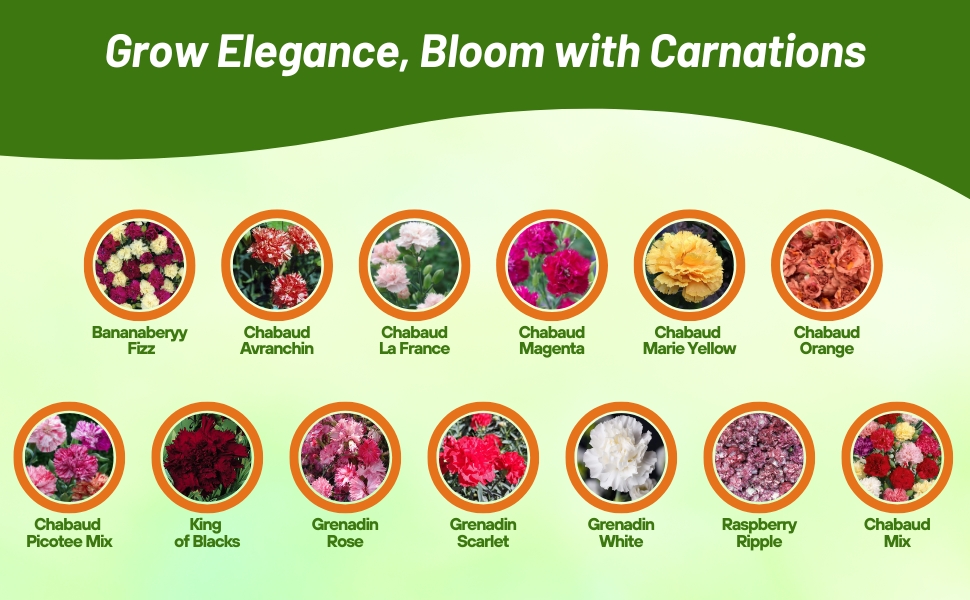
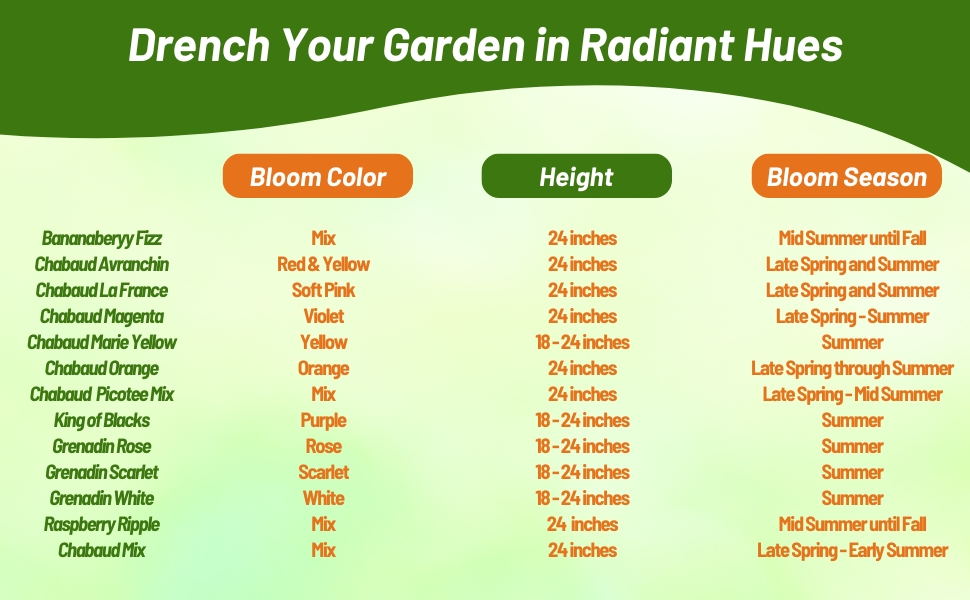
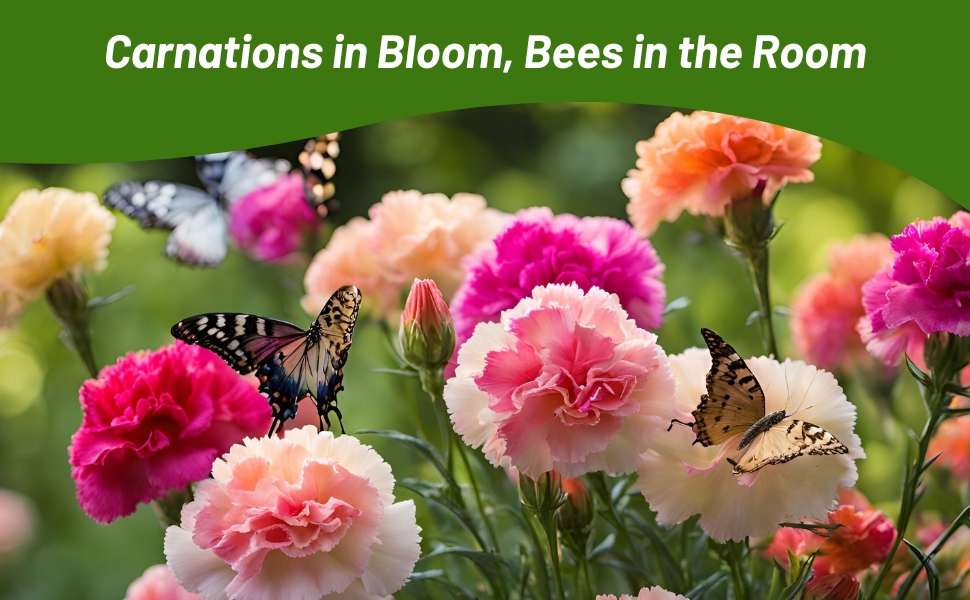
Carnation (Dianthus Caryophyllus Grenadin White) - Probably one of the whitest Carnations you will ever see, this Grenadin Carnation makes an excellent cut flower, and it is easily established from Dainthus Caryophyllus seeds.
Common Questions
What are the best places to use carnation flowers in landscape?
This is a great flower for beds and borders, cottage gardens and containers.
Does this flower attract pollinators?
Yes, carnations attract bees and butterflies as well as some beneficial insects to your garden.
Do I need to deadhead my flowers?
To promote extended bloom time and compact growth you will need to deadhead your flowers.
Do I need to divide my plants?
Yes, you should divide your carnation plants every second spring or plant new ones to maintain vigor.
Are carnations toxic to animals?
Yes, this plant is toxic to dogs, cats and horses.
Planting Directions
TEMPERATURE
65 - 70F
AVERAGE GERM TIME
7 - 14 days
LIGHT REQUIRED
No
DEPTH
Cover thickness of seed
SOWING RATE
2 - 3 seeds per plant
MOISTURE
Keep moist until germination
PLANT SPACING
12 - 18 inches
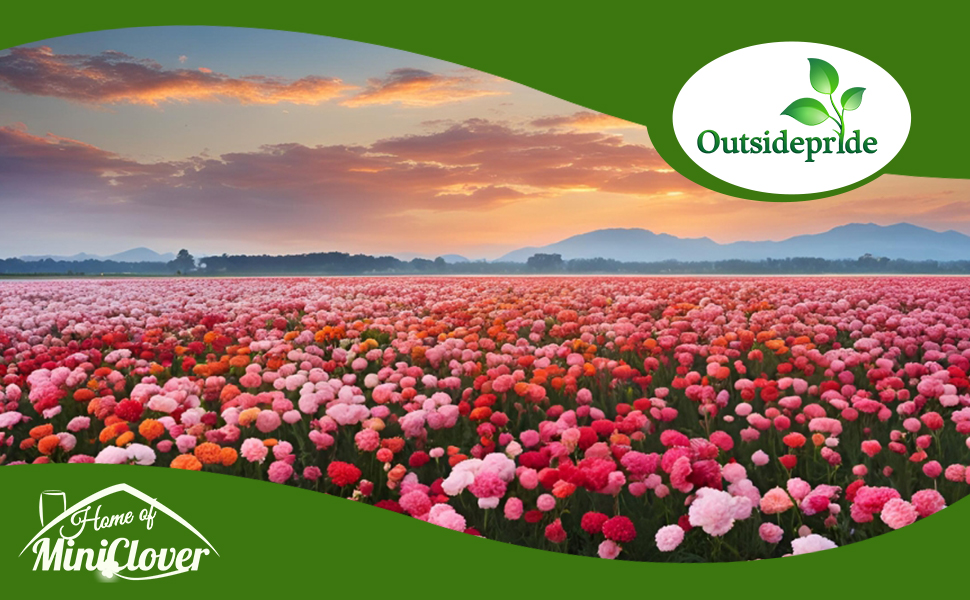
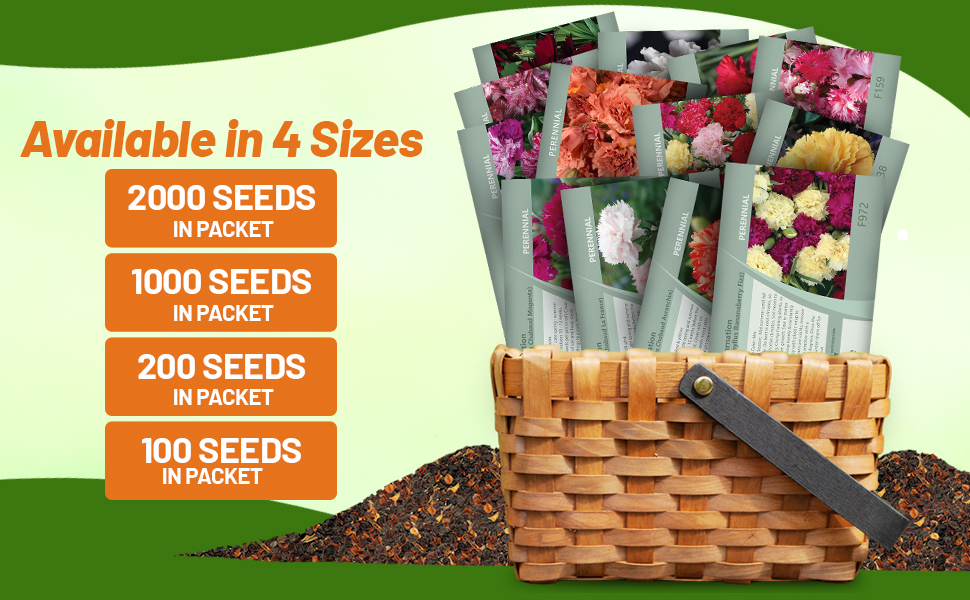
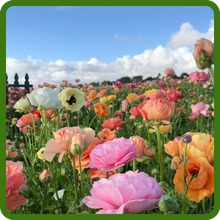
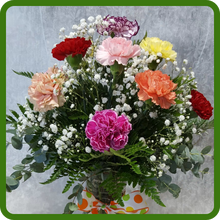
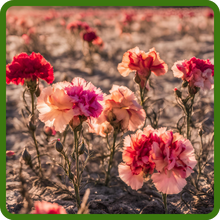
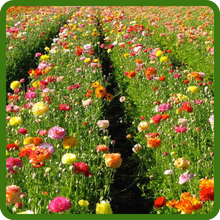
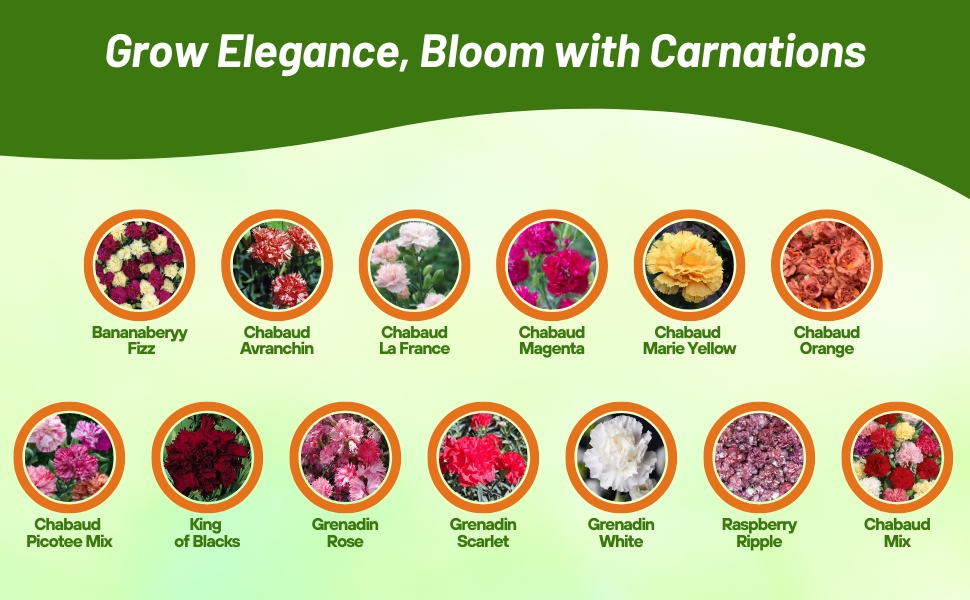
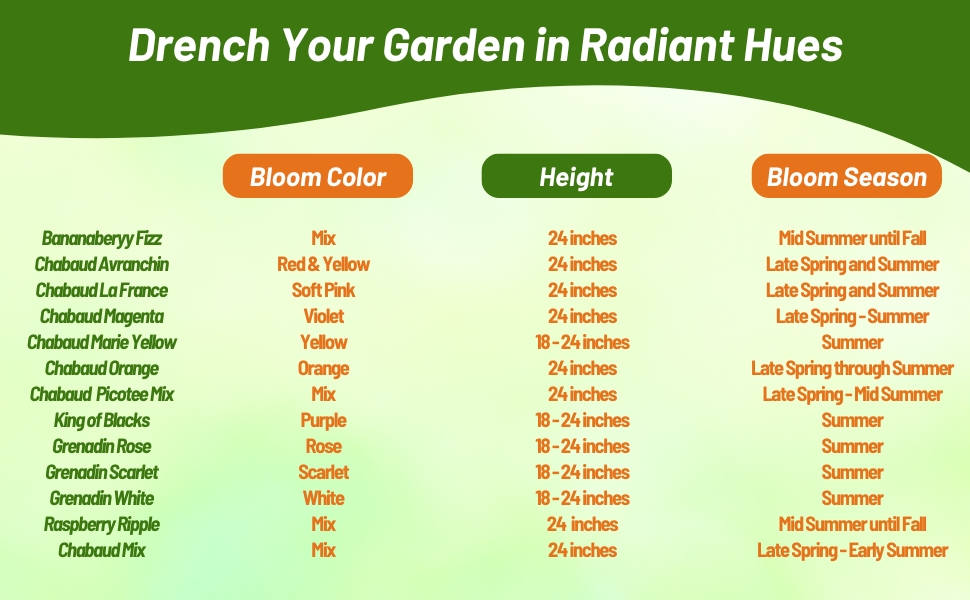
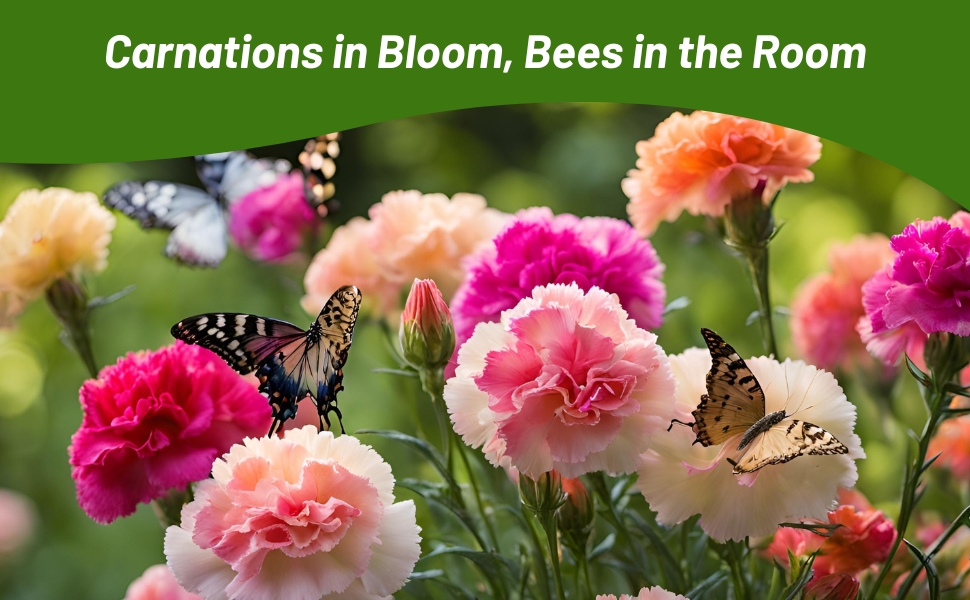
Carnation (Dianthus Caryophyllus Chabaud Marie Yellow) - Grow beautiful Carnations in your own flower garden easily from flower seed! In many parts of the world, the popularity of Carnations is more than any other type of flower including roses. The yellow frilly blooms on this Carnation plant look lovely in the garden or in a vase!
Common Questions
What are the best places to use carnation flowers in landscape?
This is a great flower for beds and borders, cottage gardens and containers.
Does this flower attract pollinators?
Yes, carnations attract bees and butterflies as well as some beneficial insects to your garden.
Do I need to deadhead my flowers?
To promote extended bloom time and compact growth you will need to deadhead your flowers.
Do I need to divide my plants?
Yes, you should divide your carnation plants every second spring or plant new ones to maintain vigor.
Are carnations toxic to animals?
Yes, this plant is toxic to dogs, cats and horses.
Planting Directions
TEMPERATURE
68 - 75F
AVERAGE GERM TIME
7 - 14 days
LIGHT REQUIRED
No
DEPTH
Sow seeds 1/16th inch deep
SOWING RATE
2 - 3 seeds per plant
MOISTURE
Keep moist until germination
PLANT SPACING
12 - 18 inches
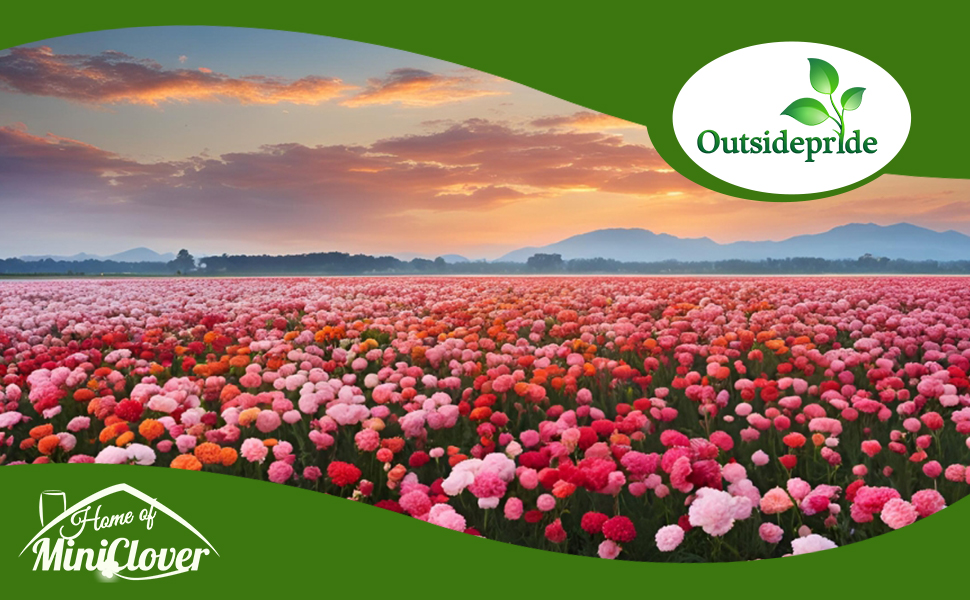
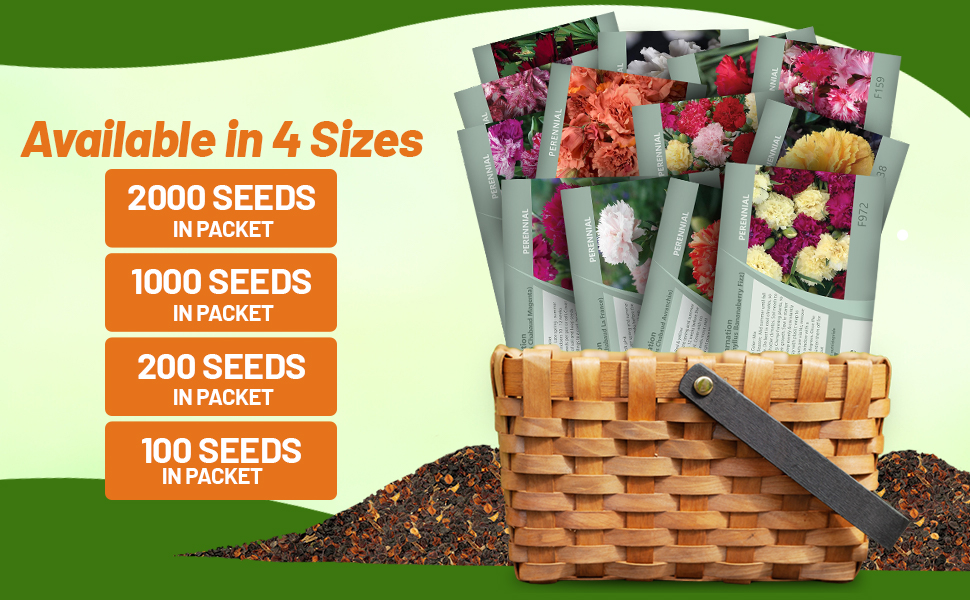
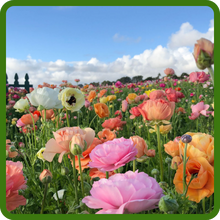
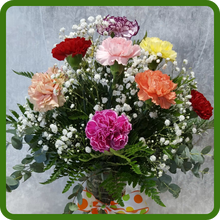
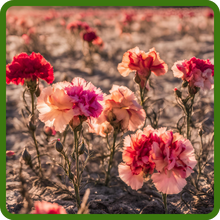
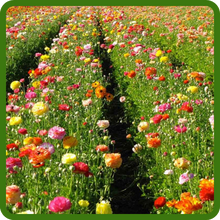
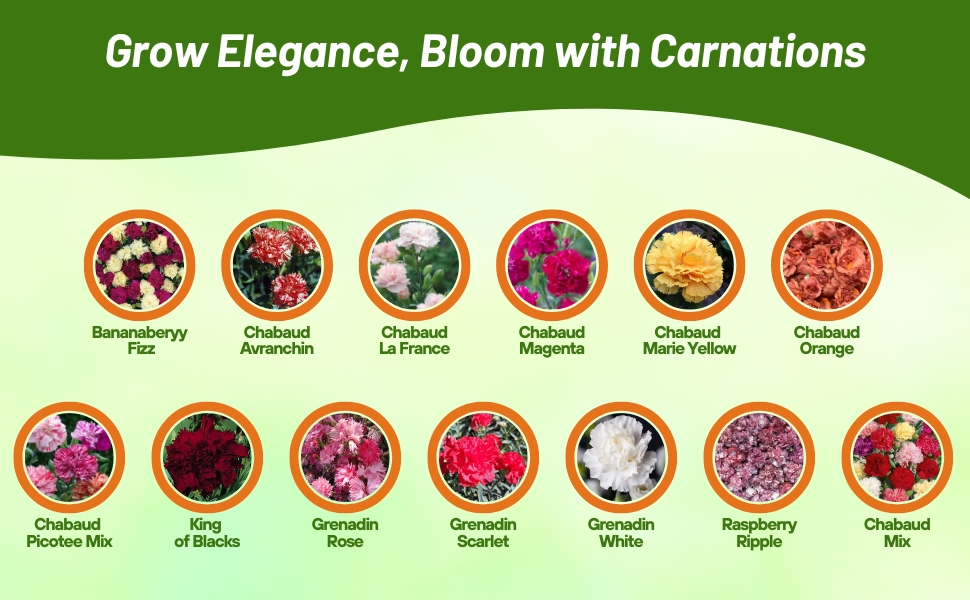
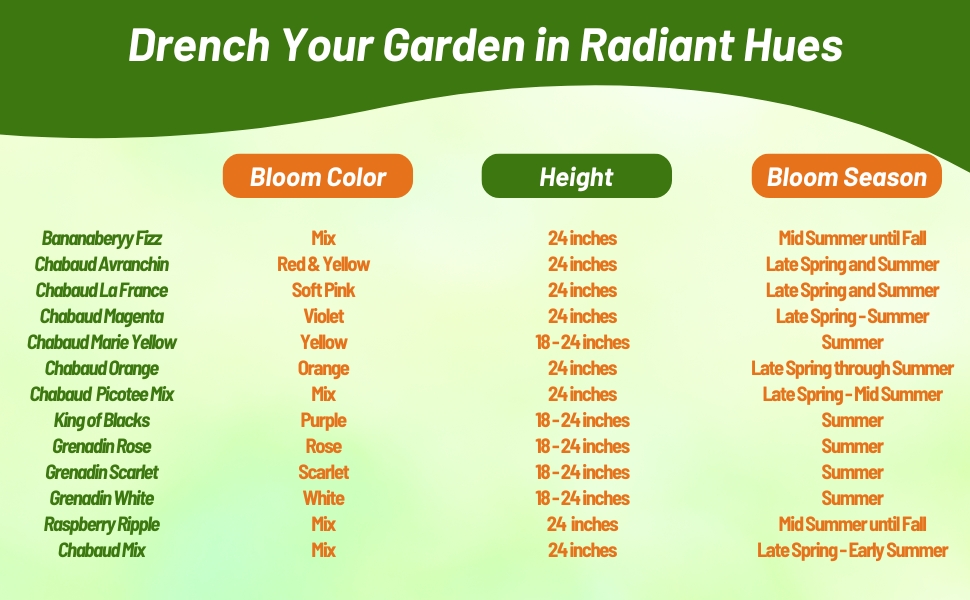
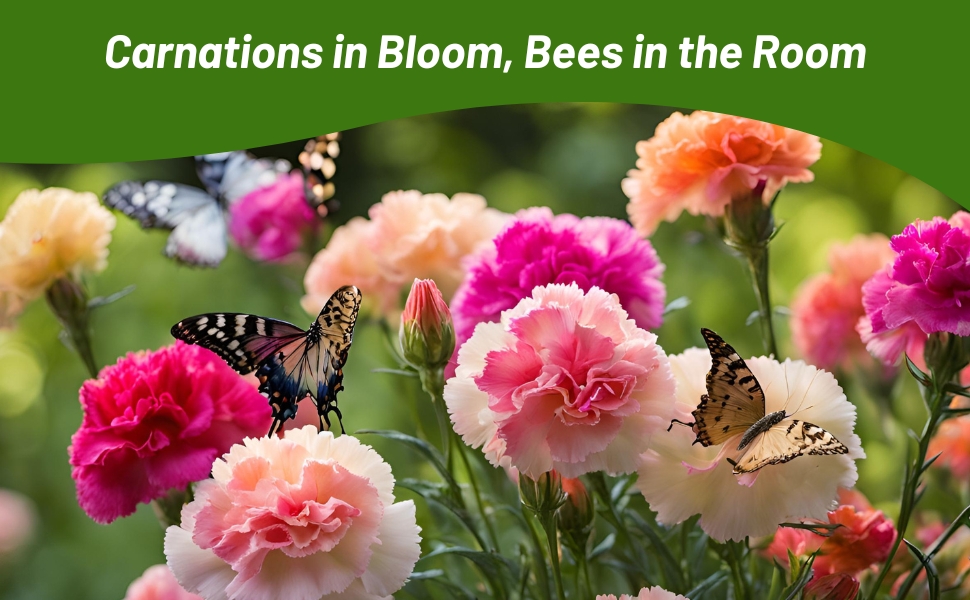
Carnation (Dianthus Caryophyllus Chabaud Mix) - Carnation seeds are perfect to grow in the cutting garden. There is no better known flower for cutting than a Carnation! This Dianthus Chabaud Mix has tall, double, fringed flowers that have a lovely spicy scent. The foliage is clump-forming and blue-green in color. Carnation flowers are easy to grow from flower seeds is just a few, quick, easy steps.
Common Questions
What are the best places to use carnation flowers in landscape?
This is a great flower for beds and borders, cottage gardens and containers.
Does this flower attract pollinators?
Yes, carnations attract bees and butterflies as well as some beneficial insects to your garden.
Do I need to deadhead my flowers?
To promote extended bloom time and compact growth you will need to deadhead your flowers.
Do I need to divide my plants?
Yes, you should divide your carnation plants every second spring or plant new ones to maintain vigor.
Are carnations toxic to animals?
Yes, this plant is toxic to dogs, cats and horses.
Planting Directions
TEMPERATURE
68 - 75F
AVERAGE GERM TIME
7 - 14 days
LIGHT REQUIRED
No
DEPTH
Sow seeds 1/16th inch deep
SOWING RATE
2 - 3 seeds per plant
MOISTURE
Keep moist until germination
PLANT SPACING
12 - 18 inches
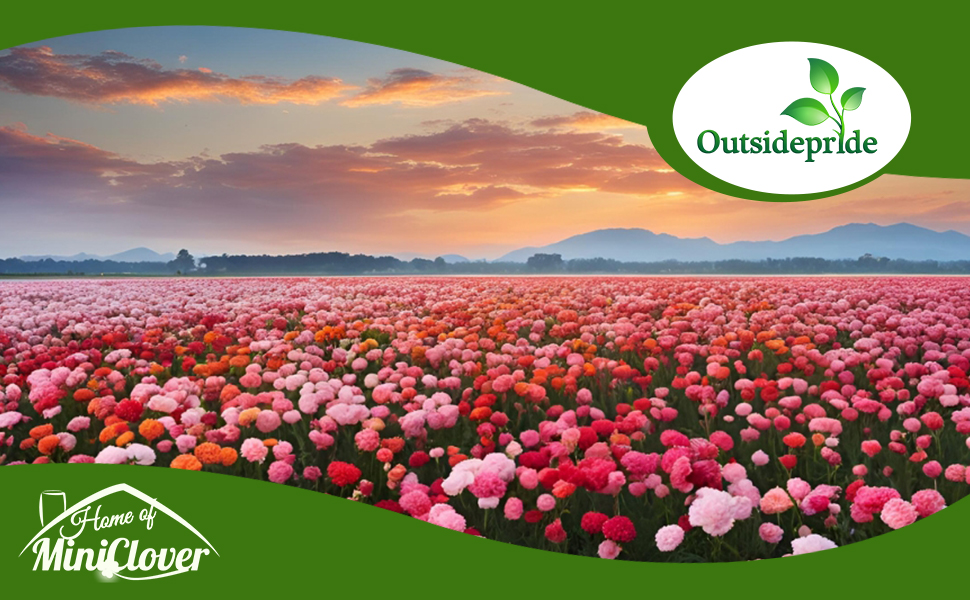
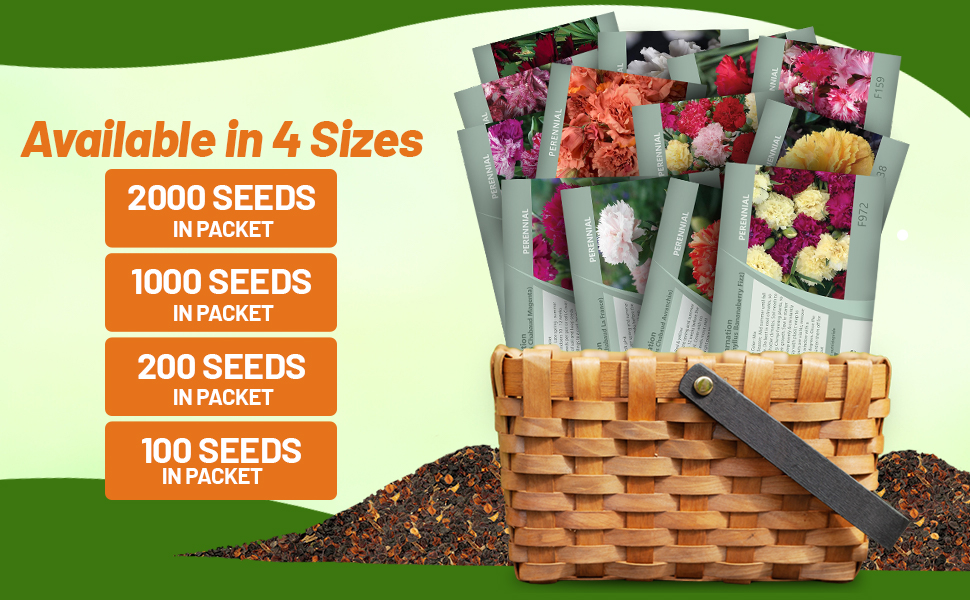
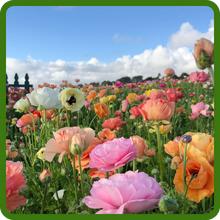
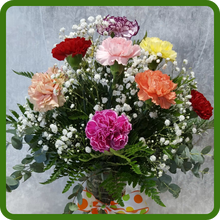
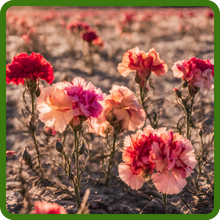

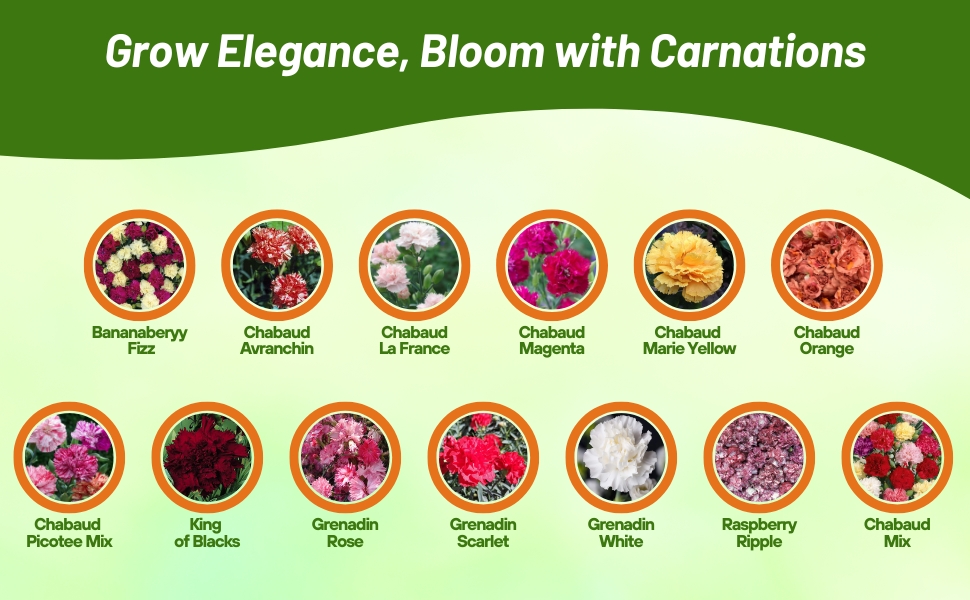
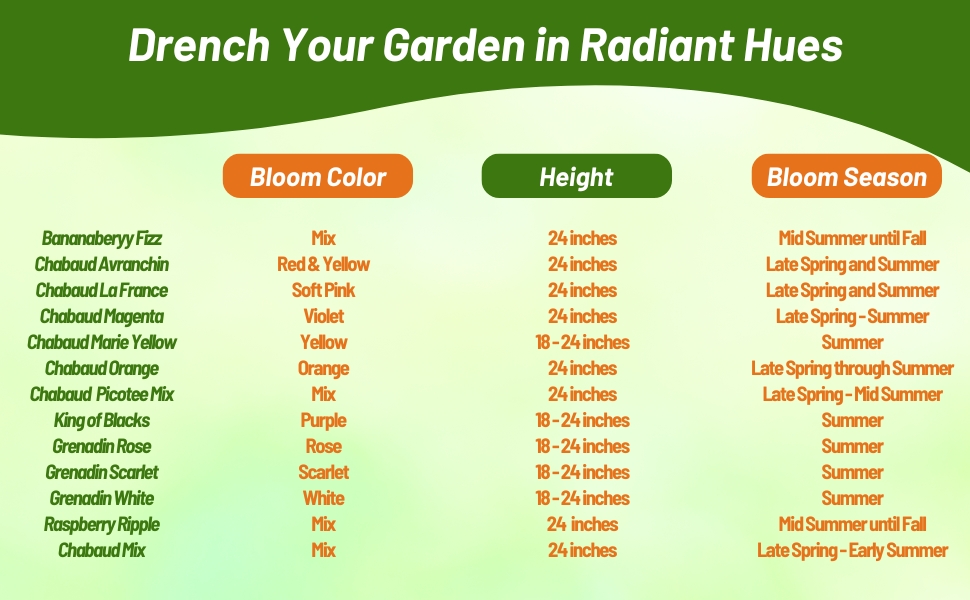
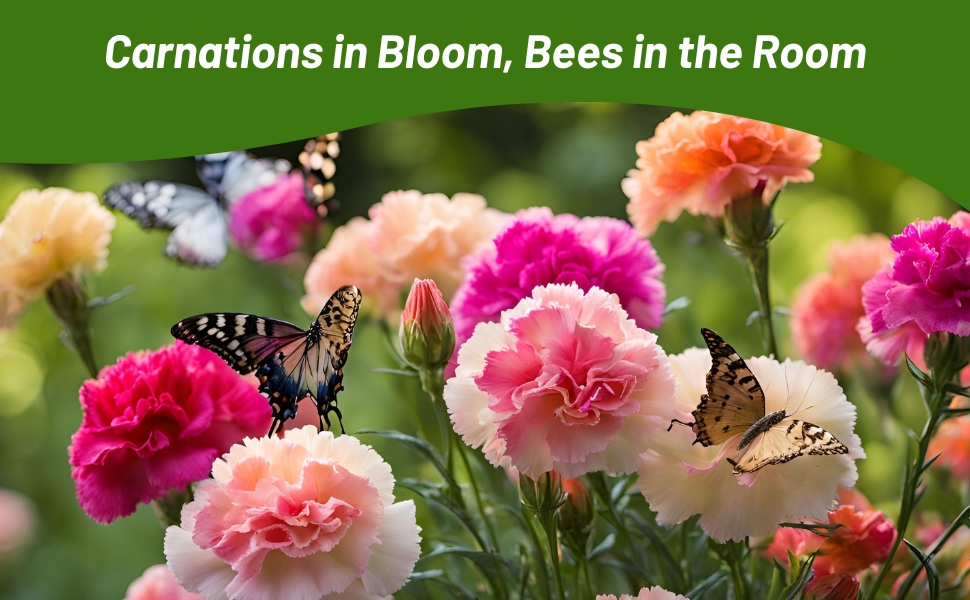
Carnation (Dianthus Caryophyllus Chabaud Avranchin) - Every cutting garden needs to have some Carnation seeds started in it! The Dianthus Caryophyllus Chabaud series are tall and perfect for floral arrangement. The Carnation flowers also dry and preserve well. This Dianthus Avranchin variety is a bi-colored bringing both red and a creamy yellow together into one beautiful bloom. This Carnation seed produces double, beautifully scented, fringed flowers that grow as a perennial in frost free zones. Carnation flowers can grow as annuals where winters are cold. Grow carnation flower seeds in borders, planters, cottage gardens and rock gardens.
For Carnation flowers the first year, start Dianthus seeds indoors 10 - 12 weeks before the last frost, planting 2 - 3 flower seeds per pot or cell. Cover the Carnation seeds with no more than 1/16 inch of soil and keep the seeds moist until germination. Move seedlings to a cool, bright place to continue growing, then harden the Carnation plants off in the garden a week or two before the last frost. Where winters are mild, Carnation seeds may be planted outdoors spring through early fall. Removing spent flowers encourages continued blooming.
Common Questions
What are the best places to use carnation flowers in landscape?
This is a great flower for beds and borders, cottage gardens and containers.
Does this flower attract pollinators?
Yes, carnations attract bees and butterflies as well as some beneficial insects to your garden.
Do I need to deadhead my flowers?
To promote extended bloom time and compact growth you will need to deadhead your flowers.
Do I need to divide my plants?
Yes, you should divide your carnation plants every second spring or plant new ones to maintain vigor.
Are carnations toxic to animals?
Yes, this plant is toxic to dogs, cats and horses.
















